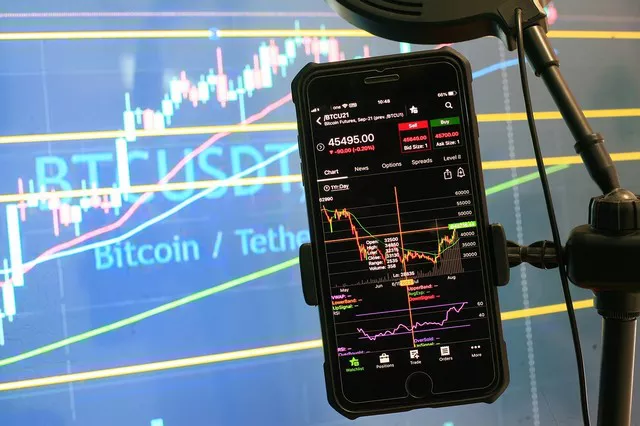In the realm of financial markets, futures trading stands as a cornerstone, offering participants the opportunity to speculate on the future price movements of various assets, including commodities, currencies, and indices. While the trading hours of futures markets are well-defined, the concept of “overnight” trading holds particular significance for traders, shaping their strategies and risk management approaches. This article delves into the intricacies of overnight trading in futures, elucidating its definition, implications, and strategies for proficient navigation.
Defining Overnight Trading in Futures
In the context of futures markets, “overnight trading” refers to the period during which trading activity continues beyond the regular trading hours established by exchanges. Unlike traditional equities markets, where trading typically halts at the end of each trading day, futures markets operate around the clock, allowing for continuous trading throughout the day and night.
The overnight session typically encompasses the hours outside of regular trading hours, extending from the close of the regular trading session until the commencement of the next trading session. For example, in the case of U.S. futures markets, the overnight session begins after the close of regular trading hours at 5:00 p.m. Eastern Time and continues until the reopening of the market the following day.
Implications of Overnight Trading in Futures
Understanding the implications of overnight trading is essential for futures market participants, as it can significantly influence trading strategies, risk management decisions, and overall portfolio performance. Several key implications of overnight trading in futures include:
Extended Exposure to Market Risks: By holding positions overnight, traders expose themselves to the inherent risks associated with overnight price movements. Factors such as news events, economic data releases, geopolitical developments, and market sentiment can trigger significant price fluctuations during the overnight session, impacting the value of futures positions.
Liquidity and Volatility Dynamics: Liquidity in futures markets can vary significantly during the overnight session, with trading activity typically lower compared to regular trading hours. As a result, bid-ask spreads may widen, and price volatility can increase, potentially leading to slippage and adverse execution prices for trades initiated during this period.
Overnight Margin Requirements: Futures exchanges often impose overnight margin requirements, which may differ from intraday margin requirements. These requirements serve to ensure that traders maintain adequate margin coverage for their positions during periods of heightened risk, such as overnight trading. Failing to meet overnight margin requirements may result in margin calls and forced liquidation of positions.
Impact on Trading Strategies: Overnight trading can influence the effectiveness of various trading strategies employed by futures traders. Strategies that rely on intraday price movements, such as day trading and scalping, may need to be adapted or supplemented with additional risk management measures to account for overnight risks. Conversely, swing trading and position trading strategies, which aim to capture broader price trends over multiple days or weeks, may be better suited to exploit overnight price movements.
Strategies for Managing Overnight Positions
Effectively managing overnight positions is paramount for futures traders seeking to mitigate risks and optimize returns. Implementing appropriate risk management strategies and adhering to disciplined trading practices can help traders navigate the challenges associated with overnight trading. Some key strategies for managing overnight positions include:
Setting Stop-Loss Orders: Utilizing stop-loss orders to establish predefined exit points for overnight positions can help limit potential losses in the event of adverse price movements. By setting stop-loss levels based on risk tolerance and market conditions, traders can protect their capital and minimize the impact of overnight volatility.
Monitoring Overnight News and Events: Staying informed about relevant news events, economic data releases, and geopolitical developments occurring during the overnight session is essential for anticipating potential market-moving catalysts. By monitoring news sources and staying abreast of developments, traders can adjust their positions and trading strategies accordingly to capitalize on opportunities or mitigate risks.
Implementing Hedging Strategies: Hedging against overnight risks by taking offsetting positions in related markets or employing derivatives such as options or futures contracts can help mitigate potential losses. For example, a trader holding a long position in crude oil futures may hedge against overnight downside risk by purchasing put options on crude oil or shorting futures contracts on correlated assets such as energy equities.
Utilizing Limit Orders: Using limit orders to enter and exit trades during the overnight session can help traders achieve better execution prices and reduce the impact of slippage. By specifying price levels at which they are willing to buy or sell, traders can avoid unfavorable fills and ensure that their orders are executed at desired price points.
Conclusion
Overnight trading plays a pivotal role in futures markets, offering participants the opportunity to capitalize on price movements outside of regular trading hours. However, it also presents unique challenges and risks that require careful consideration and proactive risk management. By understanding the implications of overnight trading and implementing effective strategies for managing overnight positions, futures traders can navigate this dynamic market environment with confidence and enhance their chances of success. Through disciplined execution and prudent risk management, traders can harness the potential of overnight trading to optimize returns and achieve their investment objectives.

